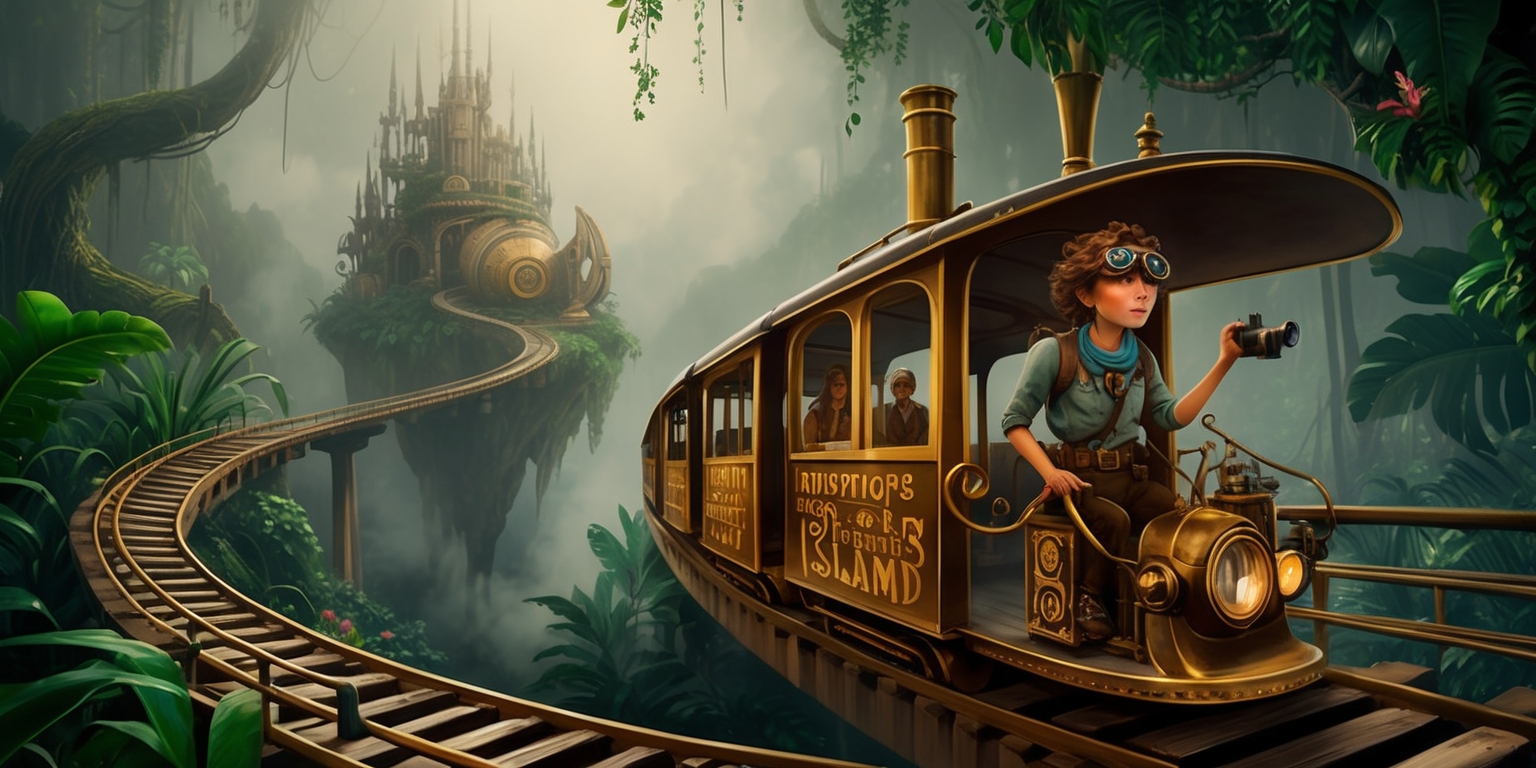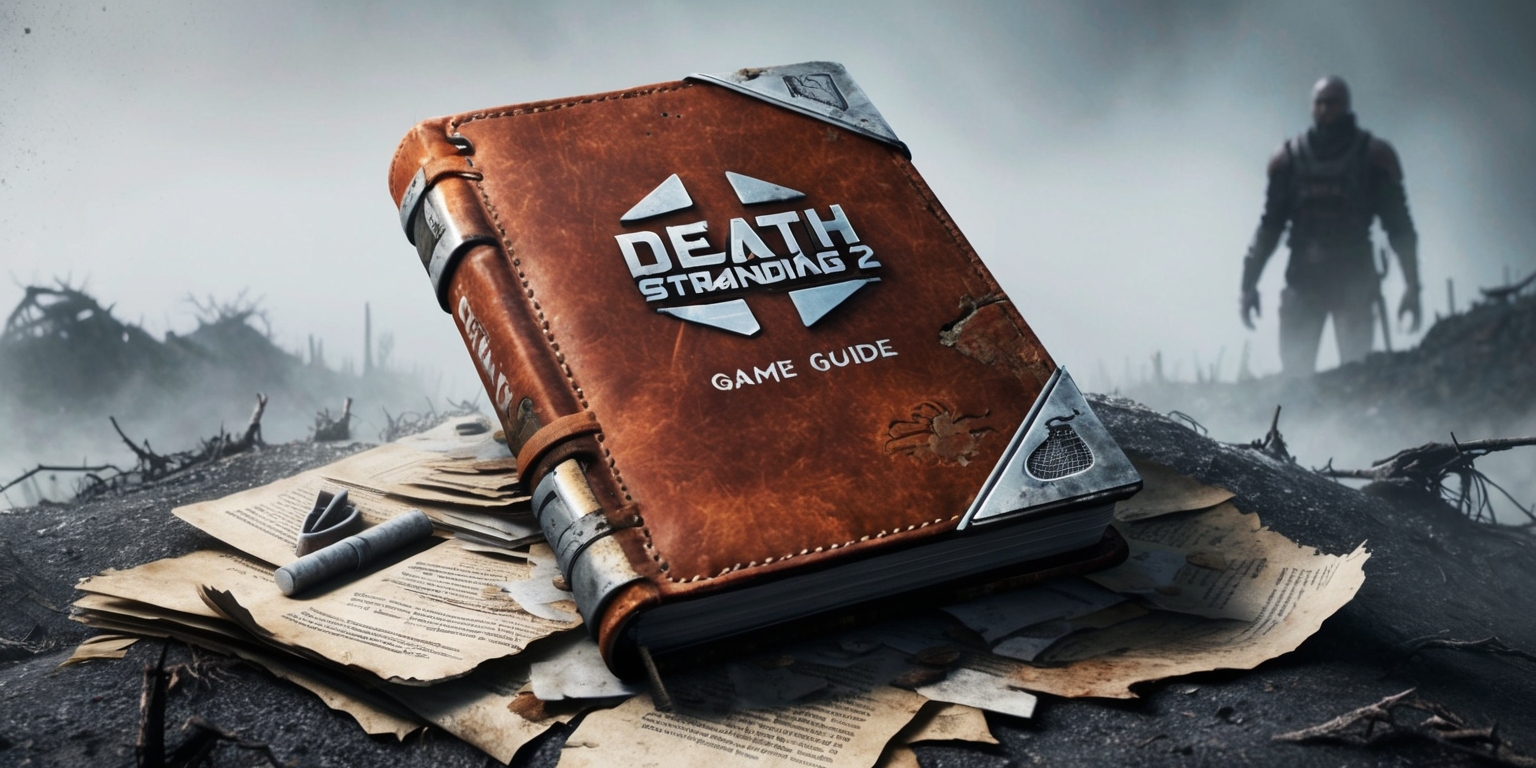Mastering Hazardous Trails and Monorail Mysteries: The Journey to The Inventor's Island
27 Jun, 2025

The expansive world of Death Stranding 2 provides an immersive experience where exploration and strategy merge to guide players through treacherous terrains and hidden locations. One such destination, known as The Inventor's island, challenges adventurers with its isolated position in Australia. Accessing this site requires careful consideration, resourcefulness, and an in-depth understanding of the environment. The journey to deliver essential cargo to this enigmatic character is filled with nuances that test both navigational skills and decision-making. The following segments delve into various facets of the challenge—from terrain analysis and route planning to the intricacies of in-game mechanics and resource management—ensuring that readers gain a comprehensive perspective on making their way through the demanding landscapes of Death Stranding 2.
Exploring the Treacherous Landscape
The environment surrounding The Inventor's island is as visually striking as it is challenging to navigate. Set in the remote regions of Australia, players face a blend of rugged terrain and hazardous tar pits that demand cautious maneuvering. This section guides explorers through the distinctive aspects of the landscape. The deep tar that borders the island prevents unmonitored traversal, adding a layer of complexity to the journey. Adventurers are encouraged to analyze the environment carefully to determine whether to take a direct yet perilous path or to engage in more methodical repairs and upgrades using available in-game resources. The tension between risk and reward remains a defining element, making each progress moment an engaging and thoughtful decision-making process.
Deciphering the In-Game Mapping System
Central to accomplishing the journey is a keen understanding of the game’s mapping system. Players must learn to interpret map markers and environmental cues accurately. The guide to The Inventor's island involves deciphering the subtle indications provided on the map, particularly when scanning the tar-sealed paths. The map displays specific zones with distinct colors—yellow-tinted areas suggest accessible paths amidst the otherwise impenetrable tar. The ability to read these signals effectively can be the difference between a doomed detour and a successful mission path. As players traverse from the Mine North of F1, towards areas beyond West Fort Knot, this navigational skill transforms everyday progress into a carefully orchestrated act of strategic exploration and resource management.
Utilizing Cutting-Edge Scanning Tools
Innovation in gameplay extends beyond physical movement and into the realm of sensory technology. In Death Stranding 2, the use of the Odradek proves invaluable when attempting to chart progress along challenging paths. This unique device enables players to scan the environment, revealing subtle but crucial details within the tar. By highlighting the water depth and the safety margins between tar clusters and passable zones, the Odradek transforms uncertainty into calculated movement. Such technology is particularly useful along the shallow path through the tar, where discerning safe passageways can prevent expensive setbacks in both time and resources. Every scan becomes a step towards a more confident and efficient traversal of an otherwise hazardous terrain.
Choosing Between the Shallow Path and Structured Routes

One of the most strategically rich decisions is choosing between the shallow path through the tar and the more structured approach via the Monorail. Each option demands not only different sets of resources but also distinct gameplay styles. The shallow path relies on natural features and careful navigation, offering a quicker yet risk-laden route that demands precision and an acute awareness of environmental signals. Conversely, opting for the route involving the restoration and riding of the Monorail introduces players to a more deliberate strategy where repairing tracks and managing logistics become central to success. This duality in route selection emphasizes the versatility required in the game, ensuring that each playthrough incorporates both high-adrenaline maneuvers and meticulous planning.
Navigating Through Hazardous Tar with Confidence
Traversing the hazardous tar areas surrounding The Inventor's island requires careful in-game management and a steady hand in navigation. Players find that using a vehicle along the designated shallow path not only improves the pace of travel but also moderates the risk associated with human error. The tar itself, with its deceptive consistency, demands that one first locate its edge—ideally positioned south of the island while lying north of the Mine. Once the boundary is identified, the Odradek becomes crucial for scanning these treacherous expanses to pinpoint the safest passages marked in attractive yellow hues. The process of moving through the tar emphasizes the importance of maintaining fully charged vehicles, as any delay or misstep can result in costly recoveries and prolonged exposure to the hazardous conditions.
Embracing the Dynamics of Vehicle-Assisted Travel
Vehicles serve as both a practical tool and a strategic asset in Death Stranding 2, especially when navigating the perilous paths that lead to The Inventor's island. The use of motorized options not only mitigates risks associated with the slowly encroaching dangers of tar but also expedites overall travel time. When employing a vehicle, players must consistently monitor their energy reserves, ensuring that the charge level remains sufficient. The process involves a cautious yet rewarding balance between speed and safety, as the vehicle carries both precious cargo and vulnerable characters through inhospital environments. The reliance on this mechanized method becomes even more pronounced when seeking to cover greater distances quickly, offering a contrast to the slower, more deliberate foot-based exploration required in other segments of the game.
Restoring the Monorail: A Commitment to Long-Term Gains
For those players who prefer a long-term strategy, the option to repair and ride the Monorail stands out as a promising route towards The Inventor's island. Repairing the Monorail is a multi-faceted task that demands patience and a significant investment of resources. Initially, players must ensure they have restored the Mine, unlocking the crucial Monorail functionality that paves the way north. The restoration process spans multiple checkpoints, each requiring the gathering of materials—a task that, while time-consuming, promises a smoother journey thereafter. Although the repair process can be resource-intensive, the benefits lie in a more secure and dependable mode of transportation. This pathway is not merely a vehicle for achieving a goal; it stands as a immersive repair management process that adds a layer Injecting a sense of authenticity and tactical complexity into the game.
Advancing Through Monorail Track Restoration
Once Monorails are unlocked, the next step involves the arduous task of track restoration. The Monorail tracks, which extend northwards from the Mine, demand continuous attention and maintenance. Players are required to invest in upgrading several sections of the route, effectively creating a reliable network that facilitates not just the delivery of cargo but also the safe passage of important characters. The restoration of these tracks is not just a mechanical action; it represents a crucial intersection between resource allocation and efficient time management. Investing in the Monorail track replenishment underscores the importance of strategic foresight, ensuring that every gap in the journey is bridged, and every stop along the way enhances the overall navigation experience within the game.
In-Game Decision Making: Weighing Risk and Reward
The diversity of transport options in Death Stranding 2 brings with it a series of calculated choices that impact gameplay at every turn. In opting between the shallow tar path and the repaired Monorail, players engage in a dynamic exercise of risk assessment and reward maximization. The former offers a more immediate but hazardous approach, while the latter demands a resource-intensive commitment that pays dividends as the journey progresses. Each pathway introduces its unique challenges – particularly when it comes to ensuring vehicle charge levels to managing the extensive task of Monorail maintenance. The decision point is not simply about speed or convenience; it is a broader reflection on the interplay between impulsive action and long-term strategy. The in-game decision-making process becomes a fascinating study in how players value efficiency over immediacy, or vice versa.
Optimizing Cargo Management During Travel
Responsible cargo management is an integral part of navigating the complexities of Death Stranding 2. As players assemble valuable items along the journey to deliver them to The Inventor, they must remain vigilant about how they manage their inventory. This process involves not only the secure placement of cargo in the backpack but also ensuring that key items do not get misplaced or stored in less accessible locations like Monorail storage. Effective cargo management becomes critical when employing transportation methods, as it directly influences efficiency and success during critical moments in the journey. The act of loading, securing, and monitoring deliveries simultaneously adds a layer of strategic multitasking that enriches the overall gaming experience by requiring persistent attention to detail and thoughtful preparation.
Refining the Approach on a Challenging Terrain
As players edge closer to The Inventor's island, the final phase of the journey demands an even more refined approach to navigation and resource management. Transitioning from broader regional navigation to the nuanced challenges of the island environment itself, every move counts. While riding the Monorail, for instance, players are required to double-check that all critical cargo is safely within reach, avoiding potential pitfalls associated with automated storage systems. Moreover, as the Monorail nears its endpoint, precise timing becomes essential for correctly disembarking—players must press and hold the appropriate control to seamlessly exit onto the island. Such fine-tuned in-game mechanics highlight the delicate balance between high-level planning and moment-to-moment execution, ensuring that the journey remains both challenging and engaging.







